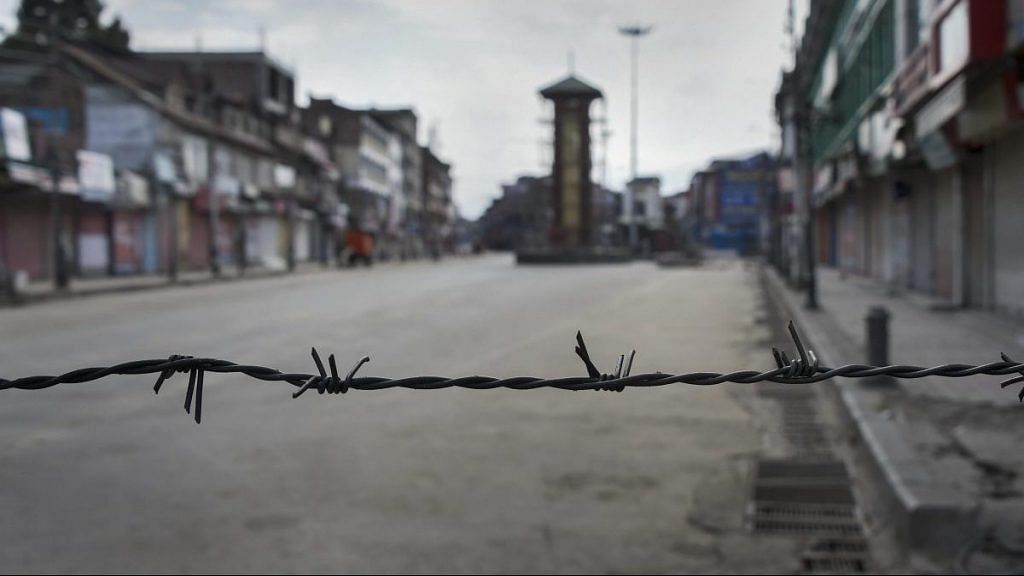In Indian public imagination, the history of Jammu and Kashmir begins in 1947. But the sole prism of ‘1947 conflict’ is restrictive. At the heart of Kashmir’s contested politics lies its 5,000 years of history, and the competing claims on historical grievances. Who gets to tell Kashmir’s history is important to who can lay claim to the land and how its troubled ties with New Delhi today gets addressed.
It might seem today that the fundamental problem in Kashmir is the lack of genuine political representation. But even a quick overview of Kashmiri history by local historians shows that this has always been the case.
Over the past five millennia, Kashmir has been ruled by Kings from several ethnicities — Hindus, Buddhists, Muslims, Afghans, Sikhs, and Dogras. While the ruling clans kept changing, a large number of Kashmiris in the past 1,000 years continued to feel they were un-represented and suppressed.
Brahmin vs Muslim history of Kashmir
For a long time, Jammu and Kashmir’s historians have presented competing views of the region’s history — Sunni, Shia, Hindu, Sikh, Buddhist, liberal and conservative versions. But the most prominent conflict over the ‘right’ version of history has been the Brahman-centric Sanskrit versus the Muslim version.
Kashmiri historian Khalid Bashir Ahmad does a spectacular job of highlighting this conflict in his book, Kashmir: Exposing the Myth Behind the Narrative.
He argues that historian Kalhana’s seminal work Rajatarangini has been the most pivotal historical account over the past millennia. Kalhana, a Brahmin, was the son of Lord Champaka, who was a minister in King Harsha’s regime in the 12th century. Kalhana’s historical account depicted Kashmir to have been ruled by Hindu rulers for over five millennia. This is the history that many Kashmiri Pandit scholars and activists today cite to highlight their stake in Jammu and Kashmir— their lost homeland in the current political template of ‘Muslim-majority state’.
But Kalhana is also contested. According to Ahmad, Rajatarangini completely ignores a 1,000 years of Buddhism in Kashmir, following the occupation of the region by King Ashoka.
Ahmad also points to a much deeper problem in Kalhana’s account. He writes that Kalhana’s history turned mixing “fact and myth” into an “art form” and questions his claims about Kashmir being ruled by Hindus for several millennia.
Also read: How India’s liberals and opposition can start winning the battle of ideas
Enduring legacy of the Kalhana school of history-writing
By the 14th century, Shamsuddin Shah Mir established the Muslim Sultanate in Kashmir. Until now, most chroniclers of Kashmir’s history had been Brahmins. Now, the Brahmin chroniclers made way for Muslim ones. Although they began to depict Muslim life and the rule by Muslim kings in a more meaningful way, they accepted Kalhana’s ancient Hindu rule myth as it is. This continued to be the case through the next few centuries.
When the British Raj handed over Kashmir to the Dogra ruler Gulab Singh, Brahman historians were again empowered. And this is perhaps when the most severe misrepresentations of Kashmir’s history began to take shape.
These new Brahmin historians not only sanctified Kalhana’s saga about ancient history, but they also exaggerated them. More strikingly, they demonised the past 400 years of Muslim rule and ignored any possible positive aspects of it.
The establishment of the Mughal rule in Kashmir marked the beginning of the subjugation of Kashmiris, according to the Brahmin historians. And this subjugation became all the more severe in the Afghan rule in the second half of the 18th century. And it entered its darkest phase during the Dogra rule — when burning oil was poured over people — “as ordinary a ‘crime’ as catching fish from a river”. More recent accounts by Kashmiri historians such as Prem Nath Bazaz talk about heinous subjugation of Muslims by their non-Muslim rulers.
Brahmin chroniclers of early 20th century, such as P.N.K. Bamzai and Anand Koul, chose to completely ignore these aspects of Dogra rule. Today, if we are aware of some of these accounts of subjugations, it because of the writings of European travellers through the 19th and early 20th century. Looking at Robert Thorp’s Cashmere Misgovernment and Arthur Brinkman’s The Wrongs of Kashmir, a grim picture appears, where Muslims were not only ill-treated but also restricted from accessing public education.
Also read: Pakistan needs to stop thinking of Kashmir as an unfinished business of Partition
The historical lack of representation in Kashmir
What does this battle of histories tell us about modern Kashmiri society?
The Brahmin version of Kashmir’s history argues that the region had always been ruled by Hindus and the intervening periods of Muslim rule were just a blip. The Muslim historians contend that Kashmir’s Muslim subjects have been subjugated by centuries of Hindu rule and their miseries never found any mention in historical writings.
At any given point of time, only a single ethnic community was represented by the regime of the day. And even then, it was just a tiny minority of that community that was co-opted by the rulers.
While the Muslims felt unrepresented during the Dogra regime, the Hindus and Buddhist felt the same under the Mughal rule and in the post-1947 period.
That leaves us with a region with a deep lingering sentiment of grievance amongst all Kashmiris – a feeling that they have never been meaningfully represented by the rulers. And this feeling has been entrenched over centuries of misrule in Kashmir. It continues till today.
The popular notion that today most Indians love Kashmir, but not Kashmiris, isn’t a post-1947 feature. Historian Mridu Rai in her pivotal book, Hindu Rulers, Muslim Subjects, shows that this has been a constant feature since the 18th century. More strikingly, this view was not just prevalent among people outside Kashmir, but also in the very people ruling over it.
Also read: No, Modi’s Kashmir policy isn’t new. He’s only continuing what Nehru started in the 1950s
